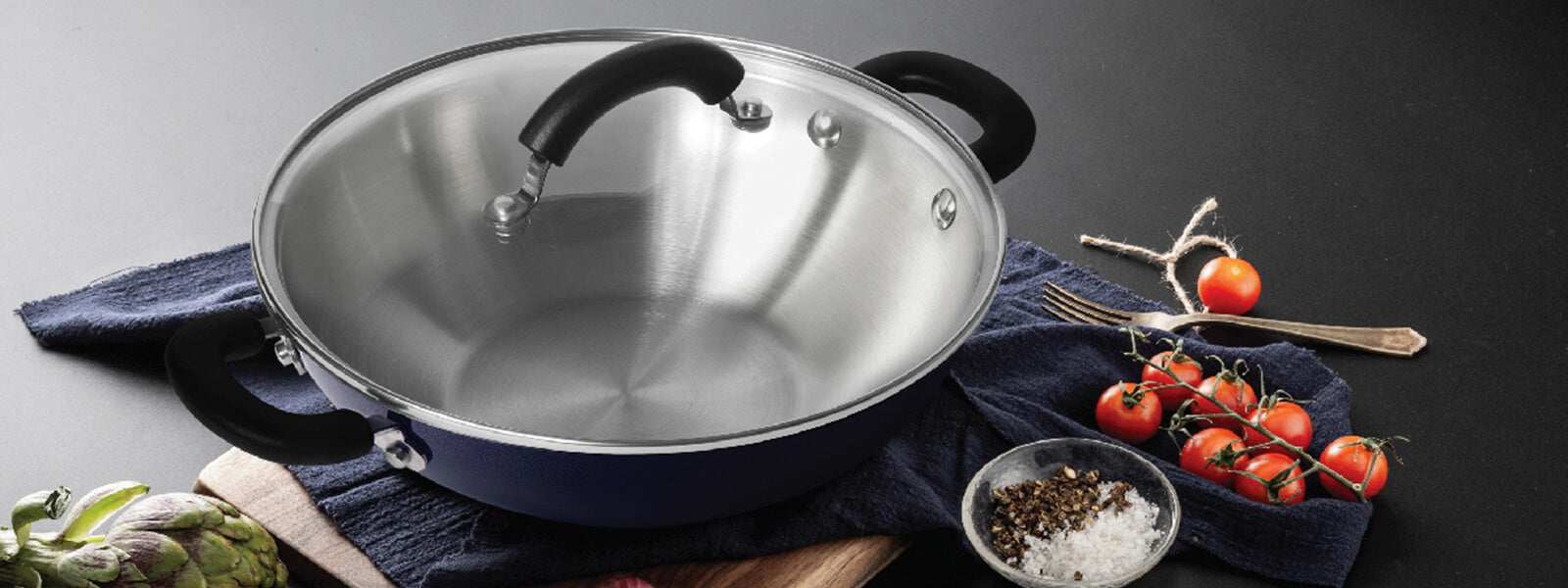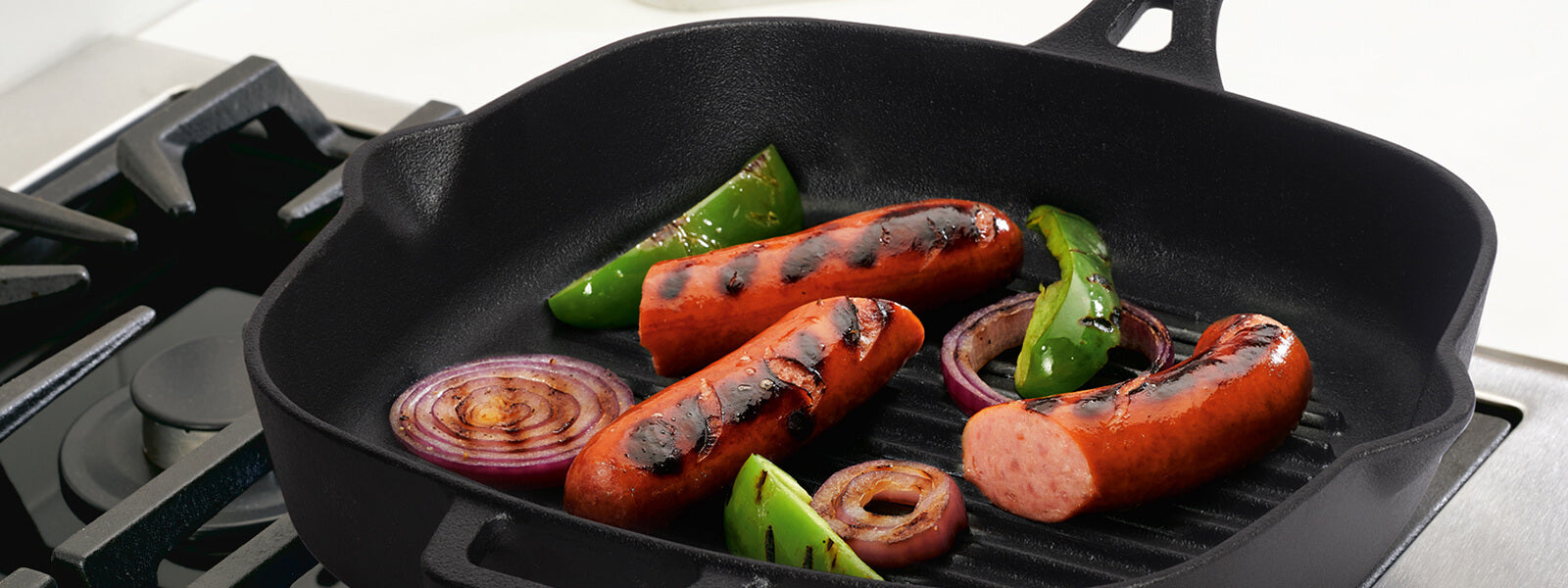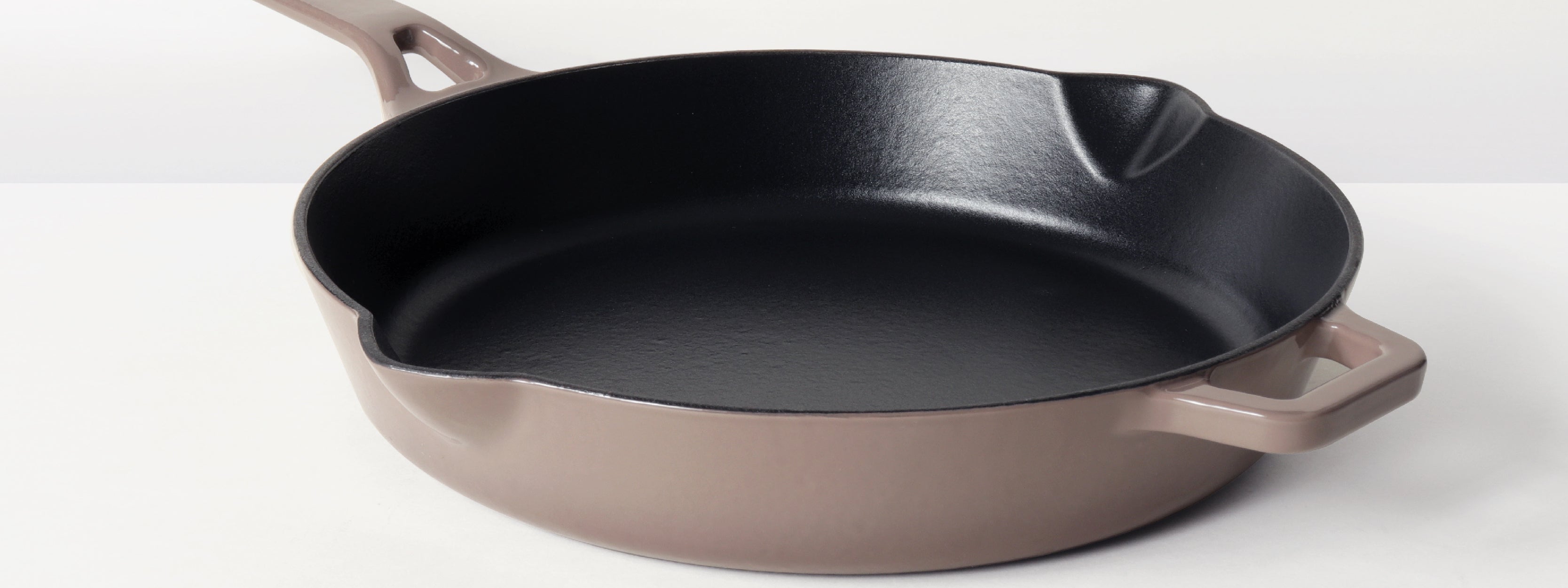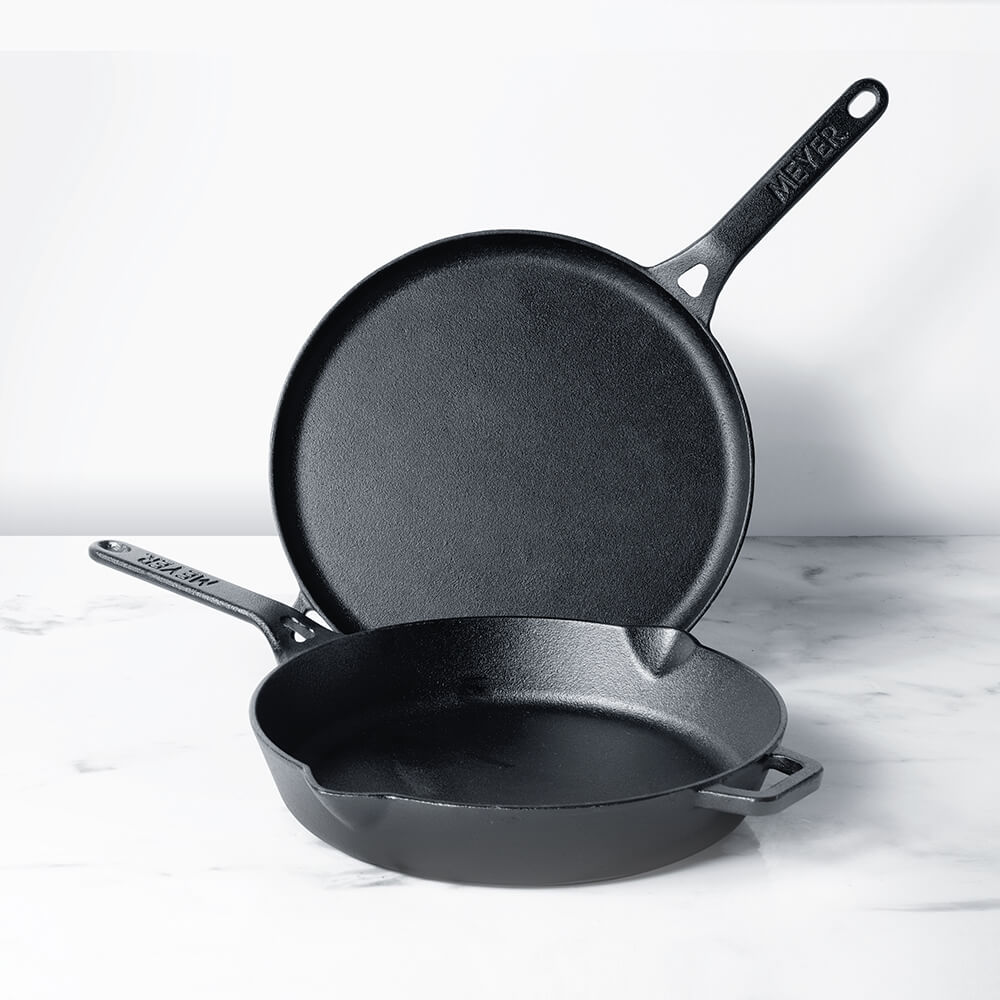Cast iron cookware is widely used in Indian kitchens and is a staple in many households. It is valued for its durability, versatility, and the ability to cook food evenly. Some of the popular cast iron cookware items used in Indian kitchens include tawas, kadhai, dosa pans, appam pans, and griddles.
Discover the timeless benefits of cast iron cookware in Indian kitchens. Learn about the versatile features this kitchen staple offers for a lifetime investment that you won't regret!
Table of Contents
- What is Cast Iron Cookware and its History?
- Benefits of Cast Iron Cookware
- Different Types of Cast Iron Utensils Available in India
- How to Care for Cast Iron Cookware
- How to Choose the Right Size of Cast Iron cookware for Your Kitchen
- 7 Amazing Recipes Using Cast Iron Utensils for Indian Dishes
- FAQ related to cast iron cookware
What is Cast Iron Cookware and its History?
Cast iron cookware is a type of cooking utensil made from iron that has been melted and poured into a mold to create a specific shape. The cookware is then typically coated with a layer of oil and heated in an oven to create a natural non-stick surface.
In the Indian context, cast iron cookware has a long and rich history, with evidence of the use of cast iron cooking vessels dating back to ancient times. Cast iron cookware was traditionally used for making dosas, idlis, and other Indian dishes, and was valued for its ability to distribute heat evenly and retain heat for long periods of time.
In the early days, cast iron cookware was made by local artisans using traditional methods. However, with the advent of industrialization and modern manufacturing techniques, mass-produced cast iron cookware became more widely available and affordable.
Today, cast iron cookware is still widely used in Indian households, particularly in traditional kitchens. It is also gaining popularity among health-conscious consumers who value its non-toxic and chemical-free cooking properties. Cast iron cookware is available in a wide range of shapes and sizes, including tawas, kadhai, dosa pans, and griddles, and is a versatile addition to any kitchen.
Benefits of Cast Iron Cookware
Cast iron cookware offers several benefits for cooking Indian recipes, including:
Even heat distribution: Cast iron cookware is excellent at distributing heat evenly, which is particularly important for cooking Indian dishes that require consistent heat for long periods of time.
Retains heat: Cast iron cookware retains heat well, which means it stays hot even after the heat source is turned off. This is particularly useful for dishes that require a slow and steady simmer.
Versatility: Cast iron cookware can be used for a variety of Indian dishes, including dosas, idlis, curries, and more. It is also suitable for both stovetop and oven use.
Natural non-stick surface: Cast iron cookware can be seasoned to create a natural non-stick surface, which means less oil is needed for cooking. This is particularly beneficial for health-conscious individuals.
Durability: Cast iron cookware is incredibly durable and can last for generations with proper care. It is also resistant to scratches and other damage, making it ideal for everyday use.
Overall, cast iron cookware is an excellent investment for cooking Indian recipes, as it offers several benefits for both the quality of your cooking and your overall health.
Different Types of Cast Iron Utensils Available in India
- Tawa: A flat, circular griddle that is commonly used for making rotis, parathas, and dosas.
- Kadhai: A deep, wok-like pan that is used for frying, sautéing, and cooking curries.
- Dosa pan: A pan with a flat surface that is used specifically for making dosas.
- Appam pan: A pan with a shallow, bowl-like shape that is used for making appams, a popular South Indian breakfast dish.
- Dutch oven: A deep, heavy pot with a tight-fitting lid that is commonly used for slow-cooking stews, soups, and curries.
>/p>
- Skillet: A versatile pan that can be used for frying, sautéing, and baking.
- Griddle: A flat, rectangular pan with no sides that is commonly used for making pancakes, rotis, and other flatbreads.
- Grill pan: A pan with raised ridges that is used for grilling meats, vegetables, and other foods.
These are just a few examples of the many types of cast iron utensils available in India. Each type of utensil has its own unique features and benefits, so it's important to choose the right one for your specific cooking needs.
How to Care for Cast Iron Cookware
Proper care of cast iron cookware is essential to maintain its durability and performance. Here are some tips for caring for your cast iron cookware:
Seasoning: Seasoning is the process of coating the cast iron cookware with oil and heating it to create a non-stick surface. This should be done regularly, especially if the cookware is new or if the seasoning has worn off. To season your cast iron cookware, coat it with a thin layer of vegetable oil or melted shortening, then heat it in the oven at 350°F for about an hour.
Cleaning: Cast iron cookware should be cleaned after each use to prevent rust and build-up of food residue. Use hot water and a stiff brush to scrub away any food particles, then dry the cookware thoroughly with a towel or place it on the stove over low heat until all the moisture has evaporated.
Avoid soap: Avoid using soap on your cast iron cookware as it can remove the seasoning and damage the surface. Instead, use hot water and a scrub brush to clean it.
Oil regularly: Apply a thin layer of vegetable oil or melted shortening to your cast iron cookware after cleaning and before storing it. This will help to prevent rust and keep the cookware in good condition.
Store properly: Cast iron cookware should be stored in a dry place to prevent rust. Avoid stacking the cookware as this can damage the seasoning and cause scratches.
By following these tips, you can ensure that your cast iron cookware lasts for generations and maintains its excellent cooking properties.
How to Choose the Right Size of Cast Iron cookware for Your Kitchen
Choosing the right size of cast iron cookware is essential to ensure that you can prepare your favorite dishes with ease. Here are some tips to help you choose the right size of cast iron cookware for your kitchen:
Consider your cooking needs: Think about the types of dishes you want to prepare in your cast iron cookware. If you plan to make stews, soups, or curries, a larger Dutch oven or skillet may be more suitable. If you plan to make pancakes, dosas, or rotis, a smaller tawa or griddle may be more appropriate.
Consider your stovetop: Consider the size of your stovetop when choosing the size of your cast iron cookware. If you have a smaller stovetop, a smaller pot or pan may be more suitable. Conversely, if you have a larger stovetop, you may want to consider larger pots or pans.
Consider the number of people you are cooking for: If you are cooking for a large family or group, larger cast iron cookware may be more appropriate. Conversely, if you are cooking for one or two people, smaller cast iron cookware may be more suitable.
Handle size: The size of the handles on your cast iron cookware should be comfortable for you to hold and lift. Consider the weight of the cookware and ensure that the handle is sturdy enough to support it.
Storage space: Consider the storage space in your kitchen when choosing the size of your cast iron cookware. If you have limited storage space, you may want to choose smaller cookware that can be easily stacked or stored.
By considering your cooking needs, stovetop size, number of people you are cooking for, handle size, and storage space, you can choose the right size of cast iron cookware for your kitchen.
7 Amazing Recipes Using Cast Iron Utensils for Indian Dishes
Here are 7 amazing Indian recipes that can be prepared using cast iron utensils:
Tawa Paneer Tikka: This popular vegetarian dish can be prepared on a cast iron tawa. Marinated paneer cubes are cooked with vegetables on a hot tawa until they are crispy and golden brown.
Kadai Chicken: This spicy chicken dish is cooked in a cast iron kadai with onions, tomatoes, and a blend of Indian spices. The cast iron kadai helps to evenly distribute heat, resulting in perfectly cooked chicken.
Pesarattu Dosa: This popular South Indian breakfast dish can be prepared on a cast iron tawa. Pesarattu dosa is made with a batter of green gram and rice, and is usually served with chutney and sambar.
Aloo Gobi: This vegetarian dish can be prepared in a cast iron skillet. Potatoes and cauliflower are cooked with onions, tomatoes, and a blend of Indian spices until they are tender and flavorful.
Sambhar: This South Indian lentil soup is cooked in a cast iron pot. Lentils are cooked with vegetables and a blend of Indian spices until they are soft and tender.
Bhindi Masala: This vegetarian dish can be prepared in a cast iron kadai. Okra is cooked with onions, tomatoes, and a blend of Indian spices until it is soft and tender.
Dum Biryani: This flavorful rice dish can be prepared in a cast iron Dutch oven. Basmati rice is cooked with vegetables, chicken, or meat and a blend of Indian spices until it is tender and flavorful. The cast iron Dutch oven helps to evenly distribute heat, resulting in perfectly cooked biryani.
These are just a few examples of the many Indian dishes that can be prepared using cast iron utensils. Cast iron cookware helps to evenly distribute heat, resulting in perfectly cooked dishes that are full of flavor.
FAQ related to cast iron cookware
Ques: What is cast iron cookware?
Ans: Cast iron cookware is a type of cooking vessel that is made from molten iron that is poured into a mold to create a specific shape. The cookware is then finished with a non-stick coating, which is usually made from seasoned oil or wax.
Ques: What are the benefits of using cast iron cookware?
Ans: Cast iron cookware has many benefits, including even heat distribution, durability, and versatility. Cast iron also retains heat well, which makes it ideal for cooking stews, soups, and other slow-cooking dishes.
Ques: Is cast iron cookware safe to use?
Ans: Yes, cast iron cookware is safe to use. Unlike some non-stick coatings, cast iron does not contain any harmful chemicals that can leach into food.
Ques: How should I care for my cast iron cookware?
Ans: To care for your cast iron cookware, you should wash it with hot water and mild soap, and then dry it immediately with a towel. You should also season your cast iron cookware periodically by rubbing it with oil and then baking it in the oven.
Ques: Can I cook acidic foods in cast iron cookware?
Ans: While cast iron cookware is generally safe to use with acidic foods, such as tomatoes and citrus, it is important to note that these foods can sometimes react with the iron and cause a metallic taste. To avoid this, it is recommended that you season your cast iron cookware before using it with acidic foods.
Ques: Can I use cast iron cookware on an induction stove?
Ans: Yes, cast iron cookware can be used on an induction stove. The iron in the cookware is magnetic, which allows it to interact with the magnetic field generated by the stove.
Ques: What dishes can I cook in cast iron cookware?
Ans: Cast iron cookware is very versatile and can be used to cook a wide range of dishes, including stews, soups, roasts, and even baked goods like cornbread and pies.
Ques: Can I use metal utensils with cast iron cookware?
Ans: Yes, you can use metal utensils with cast iron cookware. Unlike some non-stick coatings, cast iron is very durable and can withstand the use of metal utensils.
Ques: How long does cast iron cookware last?
Ans: Cast iron cookware can last for generations if it is properly cared for. With regular seasoning and proper use and cleaning, your cast iron cookware can last a lifetime.











Leave a comment